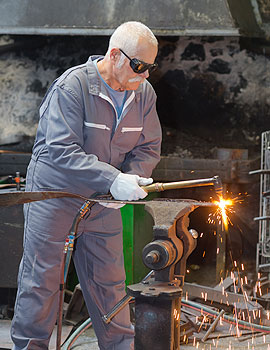Basic Techniques In Aluminium Fabrication

Aluminium fabrication involves several fundamental techniques aimed at shaping and assembling aluminium materials to create various products. Understanding these basic techniques is essential for aluminium fabrication companies in Abu Dhabi and engineers looking to produce high-quality aluminium components efficiently.
Cutting:
- Cutting is a fundamental process in aluminium fabrication, essential for shaping raw materials into desired sizes and dimensions. Common cutting methods include:
- Shearing: Utilizes shear blades to cut aluminium sheets or plates along straight lines.
- Laser cutting: Utilizes high-powered lasers to cut intricate shapes and patterns on aluminium sheets or plates with precision.
Machining:
Machining involves removing material from aluminium workpieces using cutting tools to achieve specific shapes, dimensions, and surface finishes. Common machining techniques include:
- Milling: Rotates cutting tools to remove material from the surface of aluminium workpieces, producing flat or contoured features.
- Turning: Rotates workpieces while cutting tools remove material to create cylindrical shapes, such as shafts and rods.
- Drilling: Uses rotating drill bits to create holes in aluminium components for fastening or assembly purposes.
Bending and forming:
- Bending and forming are essential techniques for shaping aluminium sheets, plates, or profiles into curved or angular shapes. Common bending and forming processes include:
- Press brake bending: Utilizes hydraulic or mechanical presses to bend aluminium sheets or plates along predetermined angles or curves.
- Roll forming: Passes aluminium sheets or strips through a series of rollers to gradually bend or shape them into desired profiles or contours.
Welding:
Welding joins aluminium components together by melting and fusing them using heat and pressure. Common welding techniques in aluminium fabrication include:
- MIG (Metal Inert Gas) welding: Feeds a consumable wire electrode through a welding gun, creating an electric arc to melt the base metal and filler material.
- TIG (Tungsten Inert Gas) welding: Uses a non-consumable tungsten electrode to produce a precise and controlled arc for welding aluminium with or without filler material.
Assembly:
- Mechanical fastening: Utilizes screws, bolts, rivets, or adhesives to join aluminium parts securely.
- Interlocking joints: Designs components with interlocking features to facilitate assembly without the need for additional fasteners.
By mastering these basic techniques in aluminium fabrication, manufacturers can efficiently produce a wide range of high-quality aluminium products tailored to specific applications and industries.





